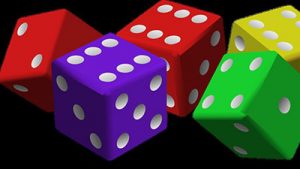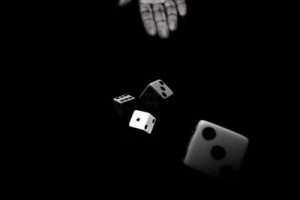An Overview Of The Most Common Probability Math Problems
While you may look at probability math problems and don’t see any practical examples of them in the real life, this isn’t quite true. The truth is that this is one of the areas of math where you can really apply it to the real life.
Answering questions about your chances to get into a specific college or university, for example, can be answered using probabilities.
Get the help you need with our free statistical calculators.

Before we show you some practical probability math problems, it’s important that you know that in math, probability is the likelihood of a certain event to occur. So, we can also say that we can have 3 possible solutions:
- either the vent will happen for sure, meaning that the probability is 1;
- the event won’t ever happen, meaning that the probability is 0;
- the even may occur sometimes, meaning that the probability is between 0 and 1.
So, based on these assumptions, you can never have a negative probability value.
The basic formula of probability is as follows:
P(A) = ( Number of ways A can occur ) / ( Total number of possible outcomes )
Example: Let’s say that you want to roll a die and you want to know the probability of rolling a 3.
You know that the number of ways it can occur is 1 and that there are 6 different possible outcomes. After all, you can roll the dice and get 1, 2, 3, 4, 5 or 6.
So, P = 1/6
Discover some basic statistics and probability formulas.

However, not all probability math problems are so simple. Most of the times, you want to discover the probability of the occurrence of more than one outcome. This is called the compound probability and its formula is as follows:
P(A or B) = P(A) + P(B) – P(A and B)
where,
- both A and B are two different events.
- P(A or B) refers to the probability of the occurrence of at least one of these events.
- P(A and B) refers to the probability of the occurrence of both A and B at the same time.
In addition, you can also have mutually exclusive events. But what does this mean exactly?
Simply put, mutually exclusive events are the events where only one of them will occur. So, when you have mutually exclusive events, P(A and B) = 0.
Looking for more complicated probability math problems? Use out Binomial probability calculator. [ https://statcalculators.com/binomial-probability-calculator/ ]
Example: Let’s say that you want to know the probability of rolling a 1 or a 4 when you roll a die.
If we were talking about individual probabilities, you would have the same probability for both events: P = 1/6. However, you want to discover the compound probability.

So, by using the formula:
P(2 or 5) = P(2) + P(5) – P(2 and 5) = 1/6 + 1/6 – 0 = 2/6 = 1/3
Independent And Dependent Events
In probabilities, you can have either independent events or dependent events.
#1: Independent Events:
You have an independent event when multiple events occur and the outcome of an event doesn’t affect the outcome of the other events.
#2: Dependent Events:
You have a dependent event when two events occur and the outcome of one of them affects the other.
While when you roll a die, you will always have independent events no matter the probability that you want to calculate, when you are playing with cards and you want to know the probability of getting a specific one, can either be an independent or a dependent event. This all depends on whether there is a replacement of the card to the deck or not.